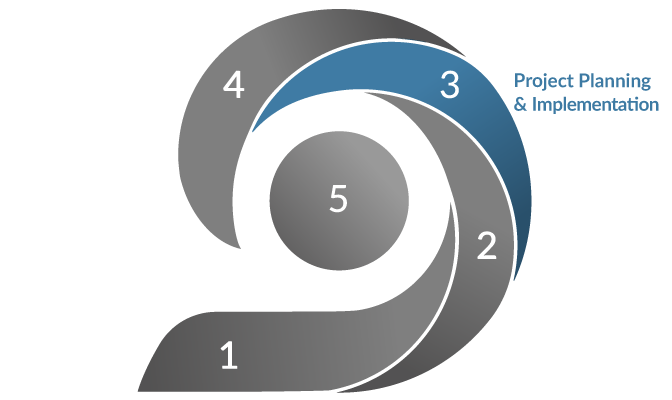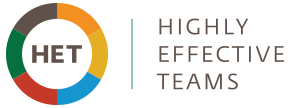
HET® for Project Teams
Module 3: Project Planning & Implementation
During this third stage of teamwork, we focus on effective project management and learn skills and acquire tools to create and manage project-based Highly Effective Teams® and improve team performance.

The wave graphic illustrates how the modules fit together over the life cycle of a team. Module 3 focuses on Project Planning & Implementation.
Key Principles
Module 3 consists of three key principles:

Define What You Will Do Together
As a team, agree on why you exist, your scope of work, what you’re doing and why, and what you promise to deliver to others.
Agree on deliverables is the first step in launching a project and when the team agrees on why it exists and what it will do. The HET Project Outline helps define your promise to your stakeholders and to one another. It gets your team on the same page about what you are doing and why, and then documents agreed-upon changes to the promise over time. It helps introduce your project to external stakeholders, communicate changes about the project to decision-makers, and justify funding. The Project Theory of Change tool helps clarify what the team can control and deliver on versus what change you hope will happen in the world because of your project’s deliverables.
Are you willing to stake your career and reputation on this deliverable?

Map Out the Work Plan
Decide who will do what by when over the course of the project to produce your deliverables.
Break down the work is the second principle of HET for Project Teams. It’s where we figure out how to produce the team’s deliverables together. The HET High Level Work Plan lays out who is going to do what by when over the life of a project. It gives the team—at a glance—a sense of how it is going to proceed from point A to point B and ultimately complete the project’s deliverables. It ensures team members agree on specific work streams and responsibilities required to achieve the team’s deliverables by specified milestones. Teams use the work plan to assess progress and get a sense of where the project is on or off track, so they can prepare where to focus discussions at team meetings and problem solve areas that are off track and need attention.
Make reality visible.

Spell Out Responsibilities
Create a clear team organization chart so everyone on the team knows what is expected and how everyone relates to one another.
Clarify roles is where we decide who is doing what so that deliver on our promises. We believe that a team begins to look and feel like a team when the members allow their names to be printed on a team chart. That’s when a team leader can find out who is committed to the project. With the HET Project Team Organizational Chart, team members will know what roles are expected of them. It also shows the hierarchy of the project team for decision making, the meeting patterns, and the lines of communication, delegation, and escalation within and beyond the team.
One goal of HET is to reduce chaos, conflict, and confusion.

The HET Framework
Module 1: Structure, Roles & Decisions
Module 2: Strategy Articulation & Prioritization
Module 3: Project Planning & Implementation
Module 4: Active Management
Module 5: HET for All
